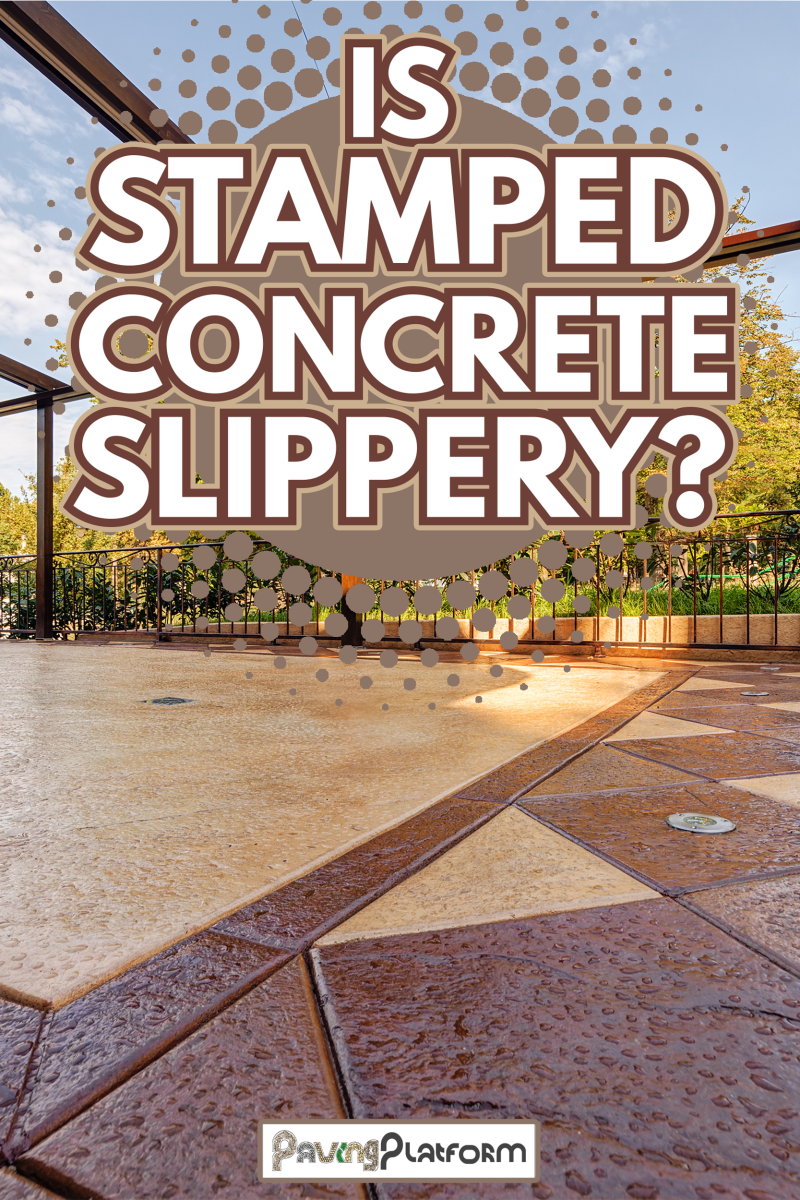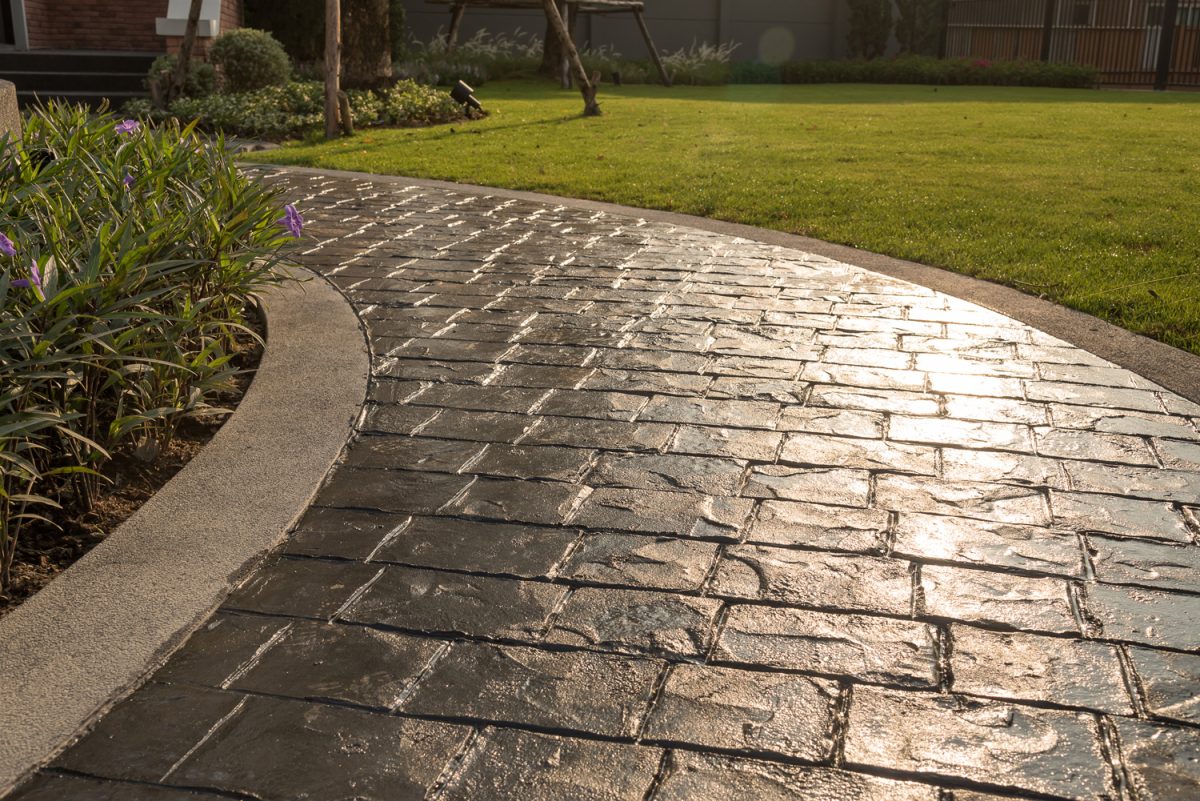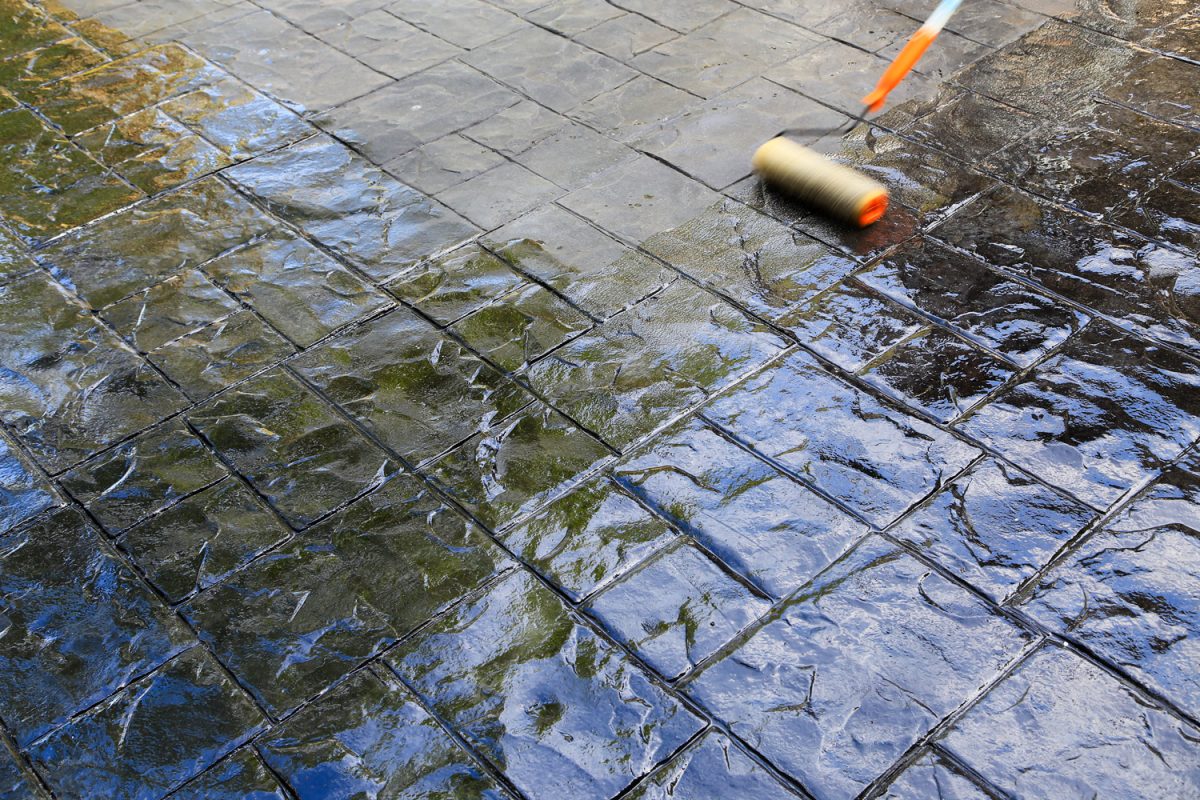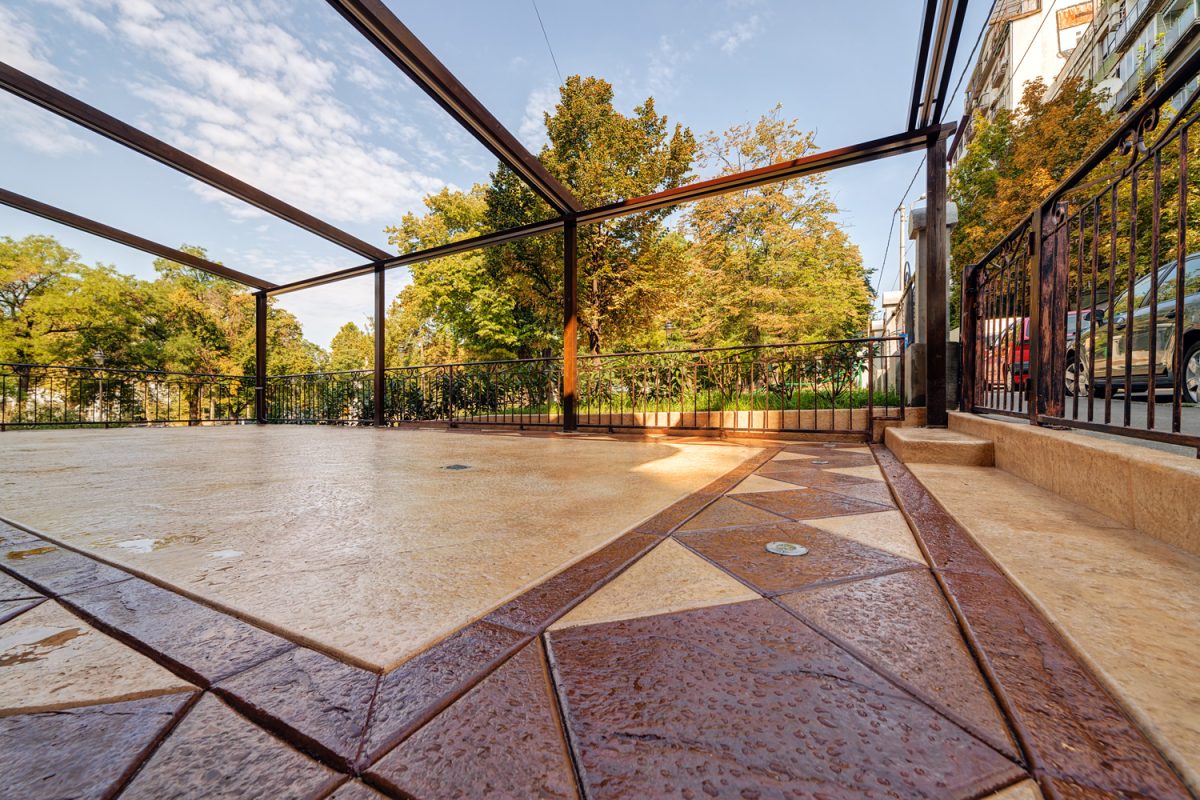Disclosure: We may get commissions for purchases made through links in this post.
When choosing the hardscaping material for your pavement project, your top consideration should always be your safety. Case in point, a slippery pavement can cause accidents and injuries. In this article, we'll talk about stamped concrete and its ability to resist slipperiness. We asked the experts about this and here's what they have to say.
Stamped concrete has some anti-skid properties due to its rough texture. But it will still get slippery especially when it gets wet or when you apply too much sealer on it. Use additives, a penetrating sealer, color hardener, and aluminum oxide grit to improve its slip resistance. Also, check the pavement's grading and pattern to make sure that it has enough friction.
Keep on reading so we can tell you more about stamped concrete's slippery quality. We'll also share the different ways of dealing with its slick surface. Lastly, we'll talk about the pros and cons of textured concrete so that you'll know if it's the best hardscaping material for your pavement project in your patios, pool decks, driveways, or walkways. Let's get started!

How do you keep stamped concrete from being slippery?

A slippery pavement surface is a recipe for disaster. It won't be able to hold things in place. People will find it hard to walk on it while vehicles can slide off. In other words, it can only cause accidents and injuries later on.
That's why it is important to choose the right paving materials to prevent these from happening as well as the damages and harm that can arise from these circumstances.
Remember, safety should always be a top priority. This is why asking if stamped concrete is slippery is a valid concern.
Stamped concrete is poured concrete that has been imprinted with different designs to enhance its appearance and consequently, make the pavement look nicer. It can resemble the look of bricks, flagstone, tiles, or wood. You can also choose from various color choices to suit your preferences and complement the overall look of your outdoor area.
Stamped concrete is a popular material used for different residential pavement projects such as patios, driveways, and pool decks. It is durable, easy to maintain, and more affordable than bricks or natural stones.
It is also called textured concrete because of its surface finish. It is not perfectly flat and one can expect a certain roughness on its exterior. As such, this pavement material offers more anti-slip properties than ordinary poured concrete.
However, it can still get slippery especially when it is wet or when you apply a sealer that leaves a film coat on its surface. The water and sealer can make the surface smoother. Thus, there's less friction that is crucial in keeping things in place while they are on top of the pavement.
Dealing with slippery stamped concrete
Experts would like to remind everyone that stamped concrete is not slip-proof. But the good news is that there are different ways to remedy the situation and prevent accidents from happening. Here are some tips to make your stamped concrete safer.
Non-slip additives
These are products that you can add to your sealer to make the surface non-slippery. There are two ways to go about it. You can mix the additives with your sealer or have them broadcasted on top while the sealer is still wet. They provide stamped concrete with more traction and grip. You can find them in the market in various sizes to fit your needs.
Check out this non-slip additive on Amazon.
Penetrating sealer
It adds slip resistance to your pavement without affecting its color so you still get to enjoy the natural look of your concrete. It also doesn't add much shine or gloss on the surface, which is why it prevents it from becoming slippery.
You can also use acrylic sealer but you have to know exactly how much is good for your pavement. Too much of it will make it so much smoother and thus more slippery to walk or drive on.
Click this link to find this penetrating sealer on Amazon.
Color hardener
This is applied before the stamping of the poured concrete. Experts say they simply throw it on the surface, a process they refer to as seeding. There's no need to trowel it over. Color hardener leaves a bit of the aggregate on the concrete surface.
This is preferred by some contractors over putting additives on sealers because once the sealers wear off, the anti-slip properties also disappear. But since color hardeners are applied even before stamping the concrete, they don't wear off easily and thus offer more permanent slip resistance to your pavement.
Aluminum Oxide Grit
This can be added or broadcasted to your preferred sealer to help make the surface less slippery. Aluminum oxide is available in different colors and is also a more affordable option. However, this substance doesn't stand up too well against wear and tear and UV rays which is why it has to be reapplied every two years or so.
Minimal Grading
The slope of your pavement should be reduced to just enough that it still allows water to move freely but not so much that it will decrease friction on the surface.
Textured Patterns
The patterns imprinted on the concrete should be more aggressive. They shouldn't be too smooth or too flat so that they can provide more grip on the surface. The tool used for stamping should also be considered. The use of a float instead of a hand trowel will give the concrete a more textured and less slick finish.
These are just some of the ways to improve the slip resistance of your stamped concrete pavement in your patio, driveway, or pool deck so you can prevent accidents and injuries from happening.
What are the benefits of stamped concrete?

Stamped concrete is a popular choice among contractors for good reason. We'll talk about these benefits point by point.
Affordability
Who doesn't want to save on construction costs, right? This hardscaping material is more affordable than pavers or stone and yet, it still allows you to have a patio, walkway, or driveway that looks as stunning as those other pavements with high-end materials.
Appearance
Stamped concrete gives homeowners different designs, patterns, and color options. Because of this, you can make your pavement match the overall design of your home's exterior.
Durability
Concrete in and of itself is already a durable pavement material. Because stamped concrete is sealed, it has added protection against changing environmental conditions. That's why this textured concrete can last for decades.
Ease of Installation
Stamped concrete lets you achieve the look of a pavement made of bricks or natural stone without the hassle of laying each hardscaping material one by one. With installation being faster, the labor cost is less expensive - giving you another opportunity to save on costs.
Simple Maintenance
Stamped concrete requires very little effort to maintain its appearance. There are no joints in between so there would be no weak links where pests can settle or weeds can grow. You can use a broom to sweep off the dirt or scrub it lightly with a brush to remove stubborn grime on the surface.
There you have it! Those are the advantages of using stamped concrete for your pavement project.

What are the disadvantages of stamped concrete?
In the spirit of helping our readers come up with an informed choice, we also want to make you aware of the drawbacks of using this hardscaping material on your pavements.
Here are the disadvantages of stamped concrete:
Expensive Repair
Once stamped concrete cracks, it affects the structural integrity of your hardscape. You would have to replace the whole pavement to have it repaired, which means you have to spend for installation all over again.
Reduced compressive strength
This hardscaping material has a compressive strength of up to 5,000 psi. This means that it can't stand up well to constant use of heavy vehicles. That's why it's not advisable to use stamped concrete on your driveway to prevent frequent costly repairs.
Porosity
Concrete is naturally porous so it absorbs water. The problem arises when the temperature gets extreme.
Water underneath the pavement is subject to freezing and thawing cycles. They can cause your hardscape to expand and contract. leading to cracking and an uneven surface over time. To help it resist water, you need to coat it with a high-quality sealer and have it reapplied every two to three years.
Quality Control
Since the mixing of the concrete, colors and other additives happens onsite, it may be hard to get the exact color and look for all batches. This becomes an issue when you would need more than a truckload of concrete for your pavement project.
Slippery Surface
As mentioned earlier, stamped concrete can get slippery when it is wet. Water causes the pavement to lose its friction as it becomes slicker. We all know what happens when the surface turns slippery. There can be accidents and injuries; needless to say, it's not safe in general for one to walk or drive on a wet stamped concrete.
Weigh the pros and cons of using stamped concrete on your pavement project so that you can make the right choice.
Final Thoughts

Stamped concrete can get slippery when its surface is wet or has been sealed with a glossy film coating. Make your pavement safer by putting a sealer, additives, aluminum oxide, and color hardener on this hardscaping material. These will make your stamped concrete less slippery and safer to use all the time.
If you want to read more about concrete hardscape materials, you may visit the following links:



![Vibrant Red Paver Stone Path, Can You Spray Paver Sealer? [How To Apply It]](https://pavingplatform.com/wp-content/uploads/2022/04/Vibrant-Red-Paver-Stone-Path-600x400.jpg)
![Properly laid out red pavers for a garden, Can You Tint Paver Sealer? [And How To]](https://pavingplatform.com/wp-content/uploads/2022/04/Properly-laid-out-red-pavers-for-a-garden-600x400.jpg)
